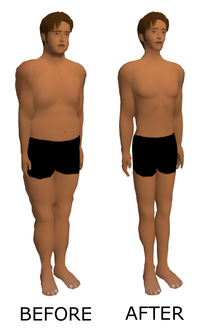
Photo from wikipedia
A waveguide-based measurement configuration is proposed, as a modification to the traditional completely filled waveguide technique, for microwave characterization of relatively thin and high-loss materials. This method is aimed to… Click to show full abstract
A waveguide-based measurement configuration is proposed, as a modification to the traditional completely filled waveguide technique, for microwave characterization of relatively thin and high-loss materials. This method is aimed to overcome the large measurement errors caused by gaps and cross-sectional distortions, which are of great concern when measuring high-loss samples, such as unidirectional (UD) carbon-fiber reinforced polymer (CFRP) composite sheets. In this article, the influences of critical parameters, namely, dielectric constant, loss factor, material thickness, and waveguide misalignment, on measured complex permittivity of several diverse samples, are fully investigated through numerical electromagnetic simulations and measurements at $X$ -band (8.2–12.4 GHz). By the virtue of the electromagnetic properties associated with high-loss dielectric materials, it is found that this technique coupled with the Nicolson–Ross–Weir (NRW)/Backer–Jarvis conversion procedure is a capable method for measuring high-loss dielectric materials.
Journal Title: IEEE Transactions on Instrumentation and Measurement
Year Published: 2022
Link to full text (if available)
Share on Social Media: Sign Up to like & get
recommendations!